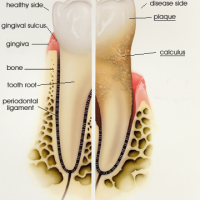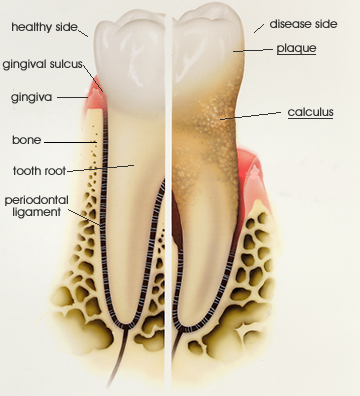|
What Causes Periodontal Disease?
|
|||||||

Etiology of Periodontal disease
By Jack Wasserstein, DDS closeAuthor: Jack Wasserstein, DDS
Name: Jack Wasserstein, DDS
closeAuthor: Jack Wasserstein, DDS
Name: Jack Wasserstein, DDS
Email: jack@wasserstein.com
Site: http://www.wasserstein.com
About: I am a Periodontist in Valencia CA and I have been in private practice in since 1990. I am blessed to be able to say that my work is also my play. I hope to share my insights, with you, that I have cultivated over the last 20 years.See Authors Posts (26) on May 11, 2010 in Periodontal (gum) disease 101
Email: jack@wasserstein.com
Site: http://www.wasserstein.com
About: I am a Periodontist in Valencia CA and I have been in private practice in since 1990. I am blessed to be able to say that my work is also my play. I hope to share my insights, with you, that I have cultivated over the last 20 years.See Authors Posts (26) on May 11, 2010 in Periodontal (gum) disease 101
About Jack Wasserstein, DDS
I am a Periodontist in Valencia CA and I have been in private practice in since 1990. I am blessed to be able to say that my work is also my play. I hope to share my insights, with you, that I have cultivated over the last 20 years.Subscribe
Leave a Reply Click here to cancel reply.
-
 Lip lowering periodontal plastic surgery procedure for a gummy smile
October 9, 2010
Lip lowering periodontal plastic surgery procedure for a gummy smile
October 9, 2010
-
 Hypermobile lip plastic surgery for a gummy smile
February 19, 2011
Hypermobile lip plastic surgery for a gummy smile
February 19, 2011
-
 Connective tissue gum graft
August 8, 2010
Connective tissue gum graft
August 8, 2010
- Is Arrestin a therapeutic treatment for reducing gum pockets? February 7, 2010
-
 Surgical exposure of an impacted canine tooth for orthodontic guided eruption
November 13, 2010
Surgical exposure of an impacted canine tooth for orthodontic guided eruption
November 13, 2010
-
 Subeptithelial connective tissue gum graft with root coverage
February 22, 2011
Subeptithelial connective tissue gum graft with root coverage
February 22, 2011
-
 Hypermobile lip plastic surgery for a gummy smile
February 19, 2011
Hypermobile lip plastic surgery for a gummy smile
February 19, 2011
-
 About Periodontist.org
January 16, 2011
About Periodontist.org
January 16, 2011
-
 Gum graft to cover exposed root surfaces
January 16, 2011
Gum graft to cover exposed root surfaces
January 16, 2011
- Floss your teeth in the shower, a suggestion for people to start flossing their teeth. December 24, 2010
-
Jack Wasserstein, DDS: Unfortunately, I am not sure, but I will try to fi...
-
lanie: what ada codes would this be under...
-
Jack Wasserstein, DDS: The primary outbreak of Herpes is usually the wors...
-
Jack Wasserstein, DDS: I would get a consult from each and stick with who...
-
Jack Wasserstein, DDS: The benefit of using Arestin with Scaling and root...
About Periodontists
Antibiotic
Arrestin
bad breath
Bone grafting
case report
Cerec
cone beam
Consumer tips
crown lengthening
ct scan
cuspid exposure
dental implant placement
Dental implants
frenectomy
gingival graft
Gingival grafting
Gingival prosthetic
gingival recession
Guided implant surgery
gum disease
gummy smile
halitosis
Herpes
jwddsinc
Laser
Lip lowering
Mini implants
Oral hygiene and prevention
Orthodontics
Periodontal (gum) disease 101
Platelet rich plasma
root coverage
semilunar graft
slider
test
Tooth removal
Treatment options
Ask a Periodontist Forum
Ask a Periodontist recent posts
- Mouth Ulcer
- Hypermobile lip surgery
- Toothpaste is just a spoon full of sugar
- Numbness after dental implant surgery
- Bleeding after periodontal / gum surgery.
- Who Typically Does Deep Tissue Cleaning & Antibiotic Into Gum Pockets?
- Labial Frenectomy
- Treatment options for a supraerupted molar with exposed roots
- Advice about bone grafting
- Periodontitis
- Dental Implant or Bridge




No comments yet.